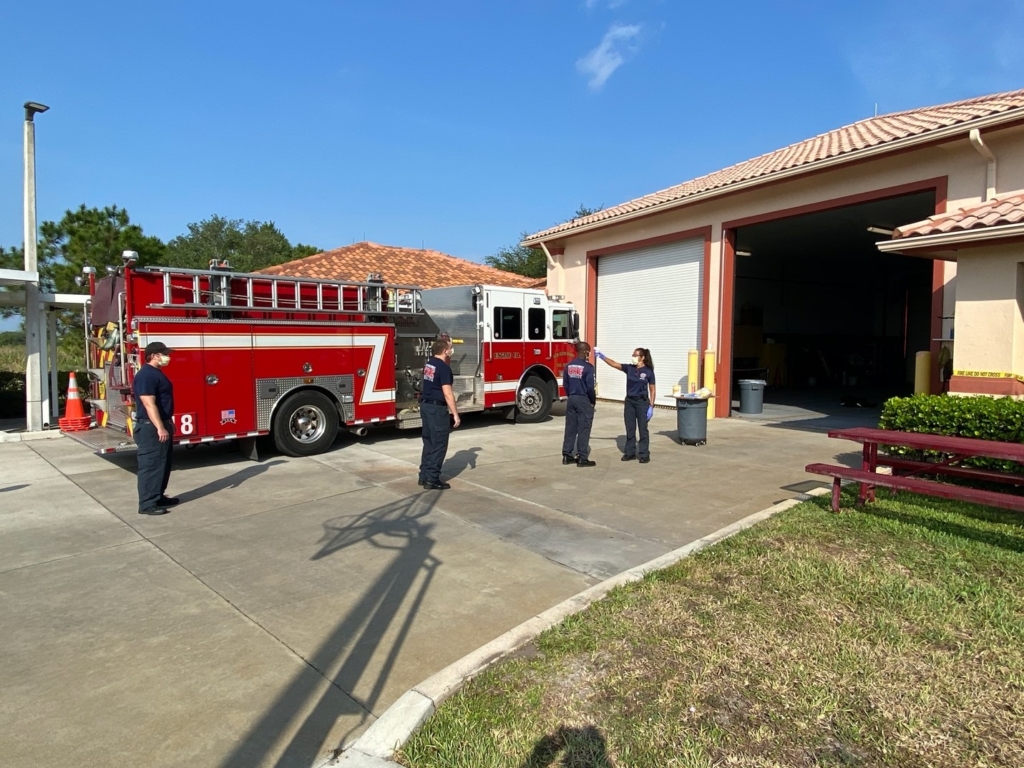COVID-19 has abruptly changed the way EMS departments operate in their response to calls.
But will COVID-19 bring about more permanent changes to EMS departments and the industry as a whole?
Departments across the nation have changed how they respond to calls since COVID-19 began. In an interview with WLUC in Baraga Counties, Michigan, Bay Ambulance of Baraga Director, Gary Wadaga, described procedural changes that they have made based on dispatch information. Initially, they only sent one crew member in full PPE to assess patients that had signs and symptoms of COVID-19 so that they do not risk exposure for multiple crew members. Full PPE gear is expensive, however, so such a change would seem effective both fiscally and as a commitment to crew safety.
At Palm Beach County Fire Rescue in Florida, Battalion Chief, Mike Reece describes how EMS departments have changed their day-to-day operations and response procedures due to COVID-19. “Crews wear masks at all times while at the station. We do temperature checks twice a day as well.”

Palm Beach County firefighters are adopting new measures to their daily shift routines with temperature checks twice a day. (Picture courtesy of PBCFR, Station 48 in Boynton Beach).
When asked about changes in how they respond to scene calls, he said, “All crew members are in full PPE – disposable gown, goggles, and an N-95 mask when they respond to any suspected COVID-19 call. A mask is also placed on the patient in these events. When the crews return, the entire rescue unit is deconned. We use foggers every morning to disinfect each rescue truck, too.”
Reece said that fogging the stations will be the next step added. Currently, they are using a paint sprayer to disperse the chemicals, but this could change down the line. He said that, surprisingly, call volume is down a bit, but this could be due to several factors. Much of Palm Beach county is very tourist-driven for one, which of course has been impacted by stay-at-home orders.
COVID-19’s impact on education
Even essential continuing education classes like American Heart Association (ACLS, PALS, and BLS) have been impacted by COVID-19. Shaun Fix, owner/operator of Emergency Medical Consultants, has had a successful continuing education business in Port St. Lucie, Fl. for over two decades.
While always enforcing the recommendations by AHA on how to properly clean the mannequins after a class, he has now implemented new policies for his instructors. Classes have been limited to only the essential ones that are mandated by employers at this time. They are halting community classes and other non-essential courses until the immediate threat of the virus has passed.
During essential AHA classes, instructors space the mannequins apart in order to allow for the required “safe-distancing” of students and staff. The instructors conduct a screening process through a series of questions before students can join the class. Students also receive gloves when practicing skills that they must perform on the mannequins.
These courses do not, however, go over high-risk skills such as rescue-breathing at this time. Additionally, departments have increased their efforts around the decontamination of equipment.
Ensuring that health care providers are up to date on their essential life support training is imperative at this time, but EMC has committed to ensuring safe delivery of that training.
Personal Protective Equipment (PPE) requirements
At Air Methods (a nationwide medevac company), they continue to fly COVID-19 patients and all other patients in need of air medical transportation. They state that they will only fly suspected COVID-19 patients when proper PPE is available to their crews.
Their website talks about the changes that they have made regarding their patient transfers – increased PPE requirements, as well as financial advocacy (including a commitment to a no balance bill for their COVID-19 patients). Because they service a lot of rural areas, their community needs them now more than ever. Their crews have become quite adept at ventilator management, as they operate with critical care trained paramedics and nurses who provide ongoing training in this area.
This really makes them a valuable link for the continuity of care for patients with COVID-19. As for how this has affected their volume, it seems safe to assume that their trends follow that of their local emergency rooms. While some areas are reporting high numbers of patient admissions and transfers, other areas are reporting that their numbers are down.
Call volume data
There is a lot of interesting data regarding decreases in call volume in areas across the country. There are some theories as to why this may be occurring.
Some believe that many non-emergent cases that would typically present to the ER have not done so. They theorize this is because of public service announcements discouraging non-emergent use of ERs. Alternatively, there has been an increase in ‘in-home’ cardiac arrest with death resulting.
We can assume that some aren’t presenting to the ED with legitimate problems because they’re concerned about overwhelming the resources.
Others theorize that calls have decreased because people have been staying at home, lessening their risk of injury and illness.
Regardless of what the data will find at the end of this, the EMS industry has certainly been impacted.
EMS departments after COVID-19
It remains unknown if COVID-19 will cause permanent change to the industry. Will face masks be worn almost as frequently as gloves even after COVID-19 is no longer an immediate threat? Will call volumes change back after things normalize again, or will people change how they view what is “emergent”? Can organizations invest in additional decontamination equipment and PPE for the crews so that, if faced with something like this in the future, we are better prepared?
We will likely find the answers to many questions as we learn from the effects of this virus.
